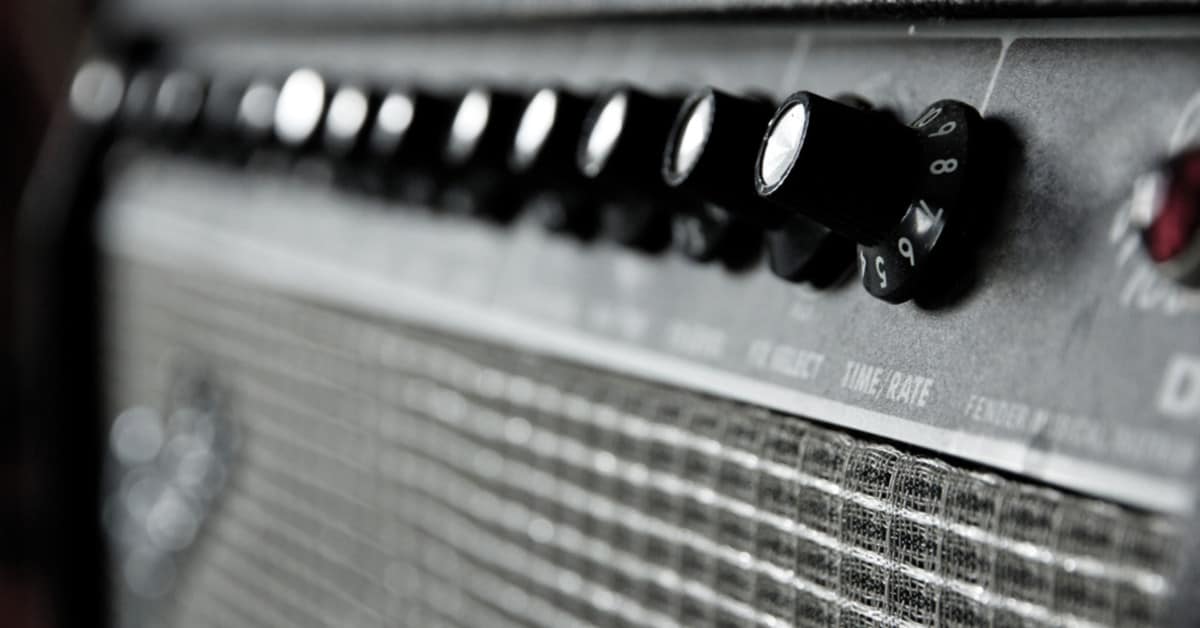Guitar amplifiers are designed to sit upright so in most situations that is the best way to sit and store them. There is likely to be low risk to occasional and temporary side orientation of your amp, it is not a good norm to establish.
However, many people have very happily and successfully stored their amp in other orientations for a long period of time.
There are certain risks in doing this which I explain below as well as some things you can do to mitigate those risks.
Can You Lay a Guitar Amp on Its Side?
Laying a guitar amp on its side is not recommended, though people have been doing it for a very long time. Usually without consequence.
The potential consequences of laying an amp on its side depending on whether it is a solid-state (modern electronic) amp or a valve amp. Each is discussed below.
Can I Lay A Solid State Amp On Its Side?
In general solid-state amps tend to be robust and can handle a fair few knocks and bumps.
Laying a solid-state amp is not likely to hurt the structure of your amp or put undue pressure on any of the individual components.
The main risk that arises from laying an amp on its side, or upside down, is heat management.
Most solid-state amps are fitted with a heat sink. A heat sink is a metal or alloy component that dissipates heat from the amp’s electronic components.
The heat is channelled away from the amp so that it does not get too much warmer than its thermal limits.
The designed heat management process relies on the heat sink to remove the heat from the amp by drawing the heat away from the amplifier’s components and cooling it by dispersing it out of the guitar amp box.
This is a typical convection cooling process as this warm air rises up, cool air is drawn into the bottom, and the heat sink helps with this process.
These heat sinks are located towards the top of the amplifier. This way, as heat rises from the operation of the amp, is attracted to the heat sink and diverted.
If the guitar amp is laid on its side, then this heat sink is no longer at the top of the unit doing its job, so the heat will not be managed in the same way.
Though most amps have an open back in one sense, heat can rise and escape and cool air can come in.
But without the heat sink there to attract the heat, then this heat is going to be absorbed into other parts of the guitar amp, that are not designed to absorb it.
Many people have reported using solid-state amps in other orientations for long periods of time (years even) with no adverse effect on the amp.
So if your situation required this to happen on an ad hoc basis, it is unlikely to cause damage to your amp, but it is not a good habit to get into, or a good norm to establish.
If you do need to run an amp on its side, you could use a small battery-operated fan clipped to the box in a way that it is pushing the hot air away from the circuitry and out of the box.
It is unlikely that harm will come to your amp if you do not do this, but this is a sensible precaution to take.
Can You Put a Tube Amp on Its Side?
Similar to solid-state amplifiers, many players have utilised tube amps on their side and upside down and have claimed no adverse impact, but it is not recommended.
A valve amp is designed very differently from a solid-state amp but heat management is still the main consideration but in a different way.
In addition to heat management, the components inside the tube, have an increased chance of sagging or shorting and will then need either servicing or replacement.
Tube amps are designed to sit ‘bulb up’ with nothing above them like in a good hi-fi system, so heat can naturally rise away from the tubes.
Some tube manufacturers instructions and safety data sheets explicitly state that tubes should not be used in any non-vertical orientation.
Laying a tube amp on its side is risky not just when it is being used, but also when it is not being used.
When a tube amp is in use, the filaments inside the tubs run red hot. This can lead to high surface area heat.
If the amp is on its side, then these surfaces that have lost some of their structural rigidity due to the heat may begin to sag, more than if they were being stored upright.
Even if the amp is not in use, tubes that are left on their side for long periods of time experience deterioration in their function as prolonged pressure sideways pressure on these components can lead to them either shorting out or impact the precise configuration of these components.
It is unlikely that anything terrible will happen if you use your tube amp on its side, or upside down, very rarely, but it is definitely not a habit you should get into.
FAQ’s
Can I Lay an Amp on Its Back?
It is not good to lay your guitar amp on its back. If you need to lay a guitar amp down it is better to lay them face down on a blanket or other spongy material.
When they are on their back, gravity is pushing the speaker magnets and components in the direction do not want them to be pushed, whereas when they are face down, the pressure is going in the right direction.


